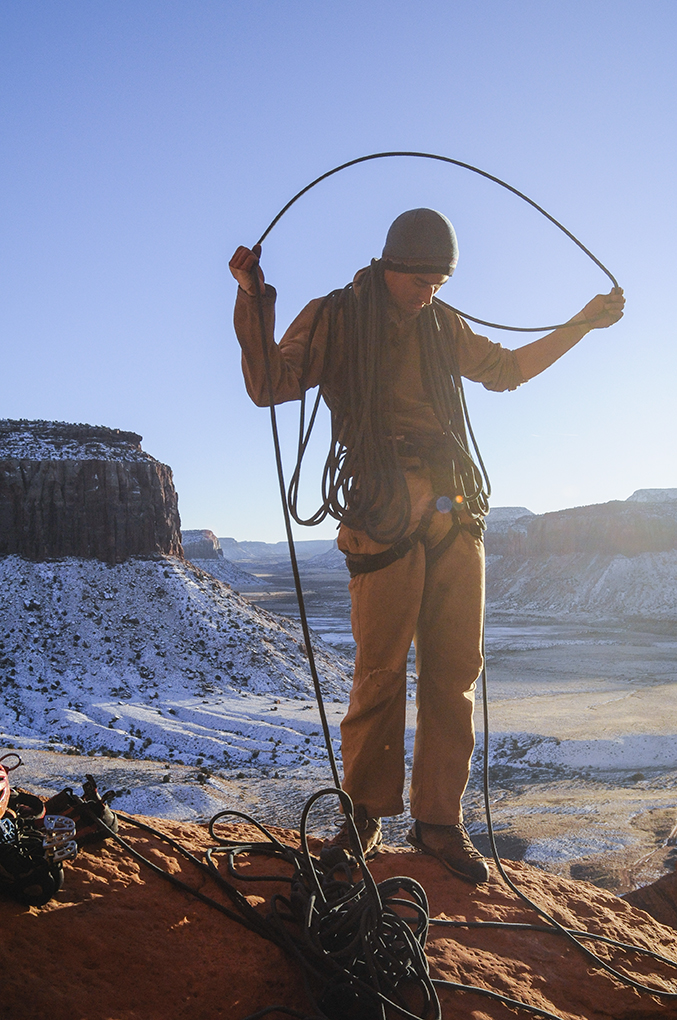
Petzl Contact 9.8mm 70m rope
Specs:
Diameter: 9.8 mm
Rope type: (CE EN 892, UIAA): single rope
Weight per meter: 60 g
Percentage of sheath: 41 %
UIAA Falls: 7
Static elongation: 9.0 %
Dynamic elongation: 35 %
Impact force: 8.4 kN
Construction: 40 carrier
Material : nylon
MSRP – 70m: $240
Test Duration: 30 days
Test Location: Indian Creek, Utah
There are plenty of ropes out there that are fine-tuned for a particular situation. From top-roping, to ice climbing, to redpointing, specialist ropes are available in diameters from 7.8mm to about 10.2mm, with a weight range to match.
For the majority of climbers, though, buying multiple ropes, each with a single, narrow purpose, is overkill or unrealistic, which makes multi-purpose ropes a great investment.
The Petzl Contact 9.8 falls right in the middle of the diameter range and use spectrum at 9.8mm.
For the majority of climbers, a 9.8mm rope is a great balance between a thicker and heavier 10.2mm top rope or teaching line, and a thinner and lighter 9.4mm or 9.2mm rope for hard redpoint attempts (or even 7.8mm twin ropes for ice climbing).
Blister Reviewer Hannah Trim and I spent a month in Indian Creek using the Petzl Contact nearly every day as our workhorse rope, running it through the gamut of situations that a mid-diameter rope like this would usually see.
Handling
Like all Petzl ropes, the Contact 9.8 comes packaged in Petzl’s “ClimbReady Coil.” Basically, the rope is coiled like you’d lap-coil it yourself at the end of the day.
Unlike the standard new-rope coil, a lap-coiled rope can be used straight out of the box with minimal kinking and twisting. Although this seems like a small detail, I have spent the better part of an afternoon trying to unkink a new rope, only to have it twist itself into a knot the first time I take it on the rock. So I appreciate this feature.
Out of the box, the Contact 9.8 is one of the smoothest-handling ropes I’ve ever used. The sheath is incredibly soft and pliable, which translates into easy belaying and tying in.

The Contact is not dry-treated, so the rope does not have any of the slipperiness commonly associated with new dry-treated ropes.
Performance
I used the Contact as my everyday, do-it-all, workhorse rope in Indian Creek. I ran it as a top-rope when doing laps on routes, and I also took a couple of 30-foot whippers on it when going for a send.
As a redpointing rope, it’s definitely less ideal than a rope in the ≤9.2mm range. I could feel the weight of the rope more, and clipping is marginally less smooth than a skinnier line. However, it is much better for his type of climbing than something in the 10.2mm range.
When used as a top-rope, the Contact 9.8 feeds through a belay device very smoothly, which is a good or bad thing, depending on your perspective. Climbers just learning how to belay will definitely feel more confident with a thicker rope, since it is easier to control speed when lowering your partner. This thinner rope is great for more experienced climbers, though, since taking in slack is very smooth, and I did not experience any tennis elbow that I sometimes get with a stiffer rope.
NEXT: Dirt Resistance, Middle Mark, Etc.
